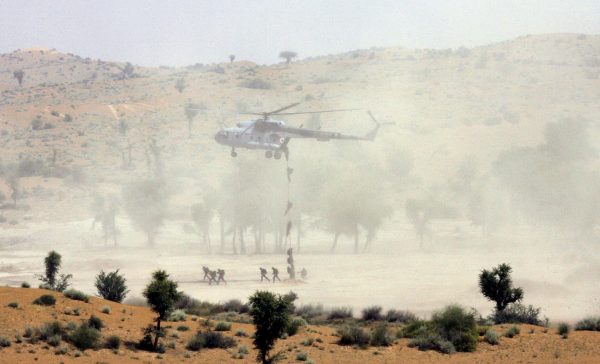Defence is the most successful dimension of the US–India strategic partnership to date. And defence trade is the most visible indicator of that cooperation. More than just a matter of dollars and cents, bilateral defence trade is an important stepping stone to building the kind of robust defence partnership that the United States’ Indo-Pacific strategy requires.
Major defence procurement decisions are inherently strategic in nature. The United States uses defence sales as an important foreign policy tool to build long-term relationships and interoperability with partners and allies. As the United States looks to forge closer defence and security cooperation with India, defence trade is uniquely useful not only in helping India’s military to modernise and build the capability that will enable it to play the role of net security provider, but also to do so in a way that aligns the military more closely with the United States and its armed forces. Large-scale procurements facilitate relationships that last decades, as militaries work together over the lifespan of the platform on training and maintenance.
The US defence industry is still a relative newcomer to the Indian defence market. India relied predominantly on the Soviet Union for defence equipment for most of the Cold War. The first post-Cold War US foreign military sale to India was in 2003 with a modest US$190 million sale of twelve AN/TPQ-37 fire finder radars. Significant defence trade with the United States did not commence in earnest until 2008, with India’s purchase of six C-130J heavy lift aircraft. It accelerated from there and total defence sales reached US$15 billion by 2015. The United States anticipates selling Sea Guardian unmanned aerial vehicles to India in the near-term and US firms are contenders for the Indian Air Force and Navy’s forthcoming fighter aircraft deals.
These shared platforms help build military interoperability, as armed forces that use the same equipment develop a shared understanding of doctrine, command and control dynamics and standard operating procedures through combined planning and training.
In the near term, US defence sales to India are poised to enhance bilateral maritime security cooperation. The two countries have expressed their intent to cooperate on maritime domain awareness (MDA) in the Indian Ocean region. In this regard, common platforms can facilitate data and information sharing. Should India acquire the Sea Guardian unmanned aerial vehicle, India’s capacity to collect maritime domain awareness imagery will be greatly enhanced. If India signs an agreement to share secure communications data with the United States, the two countries will be able to securely transmit imagery and MDA data in real time.
Shared platforms could also provide an opportunity to work in concert with other US allies in Asia. For example, it is conceivable that India could someday engage in coordinated maritime patrols with the United States and Australia, which also flies P-8s in the region.
The United States faces several challenges in continuing its successful run of defence sales to India. Except in rare circumstances, India does not factor geostrategic considerations into its defence procurement decisions. This means that the long-term operational and strategic benefits of the relationship are not taken into account.
India also wants to leverage procurements to accelerate its burgeoning domestic defence industry. But technology transfer requirements are sometimes unrealistic, or beyond the realm of what US suppliers — who often have the best technology in the market — are willing or are permitted by the US government to offer. There is potential for India’s domestic defence companies to pair with US global suppliers. US defence firms Boeing and Lockheed Martin, for example, have impressive joint ventures in India that produce aircraft parts for their respective global supply chains.
The two countries’ bureaucratic processes for defence trade are not well aligned. Each operates with a sense of exceptionalism — that others need to change to meet its needs. Neither Washington nor New Delhi is likely to overhaul its system anytime soon.
US defence sales to India are key enablers of the types of cooperation that both countries have endorsed as integral to achieving their shared vision for the Indo-Pacific. Defence sales will remain important to sustaining the broader US–India strategic relationship to the extent that defence trade bolsters overall defence cooperation. At a time when the bilateral economic agenda faces steep obstacles, the role of bilateral defence cooperation is becoming all the more important. For all of these reasons, defence trade merits a sustained focus by officials in both capitals to address and overcome any obstacles to ensuring a positive trajectory and collaboration into the future.
Cara Abercrombie is a Visiting Scholar at the Carnegie Endowment for International Peace and former US Deputy Assistant Secretary of Defense for South and Southeast Asia. The views expressed herein are the author’s own and do not necessarily represent those of the Department of Defense or the US government.

